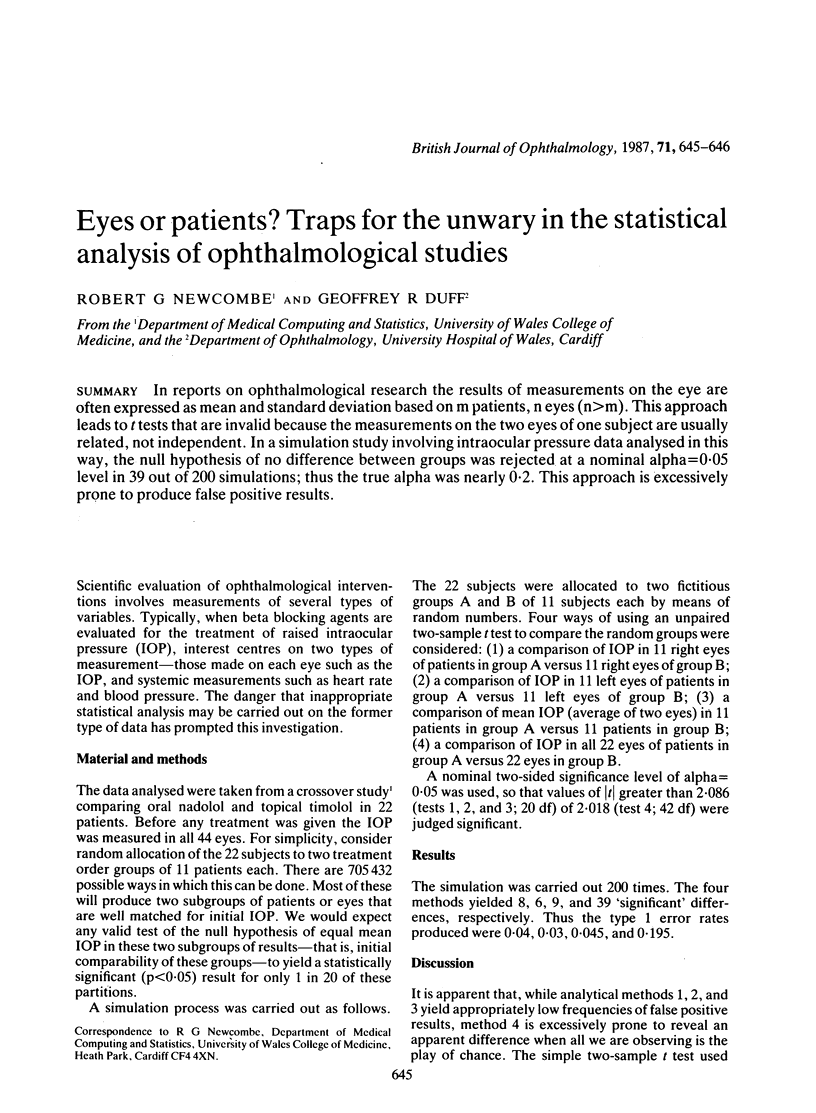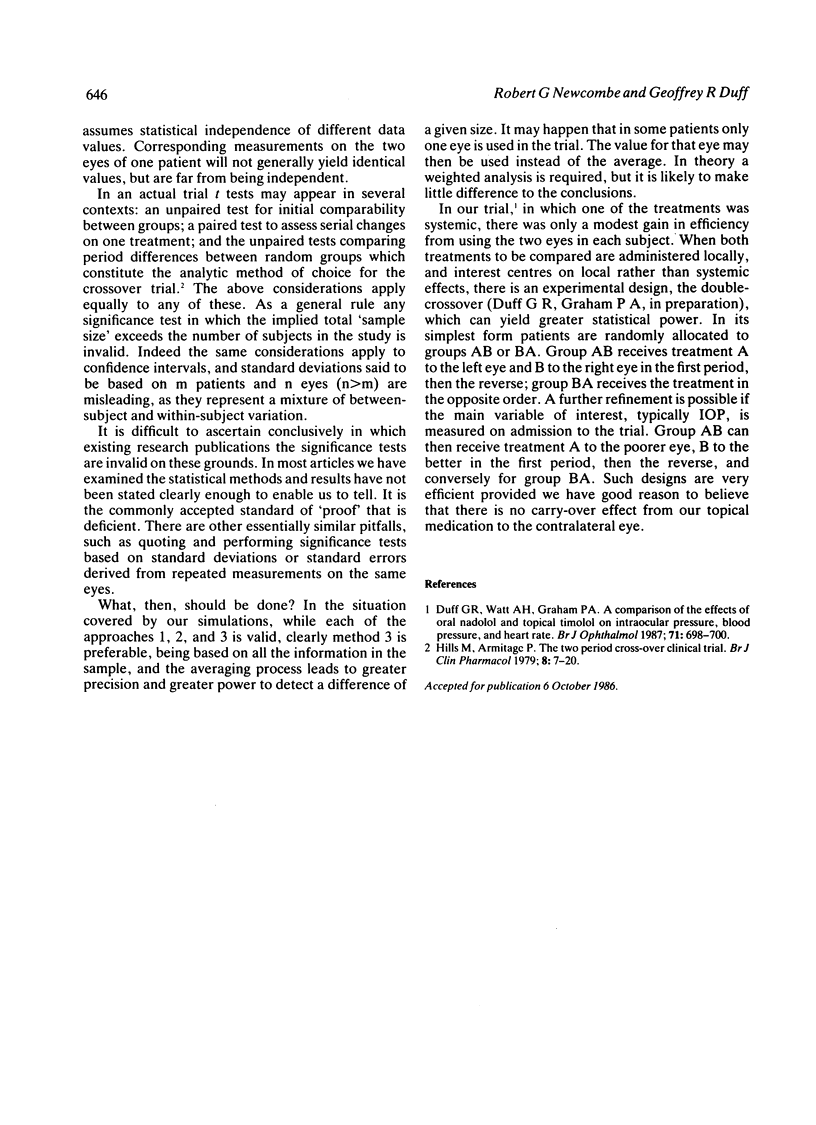Abstract
In reports on ophthalmological research the results of measurements on the eye are often expressed as mean and standard deviation based on m patients, n eyes (n greater than m). This approach leads to t tests that are invalid because the measurements on the two eyes of one subject are usually related, not independent. In a simulation study involving intraocular pressure data analysed in this way, the null hypothesis of no difference between groups was rejected at a nominal alpha = 0.05 level in 39 out of 200 simulations; thus the true alpha was nearly 0.2. This approach is excessively prone to produce false positive results.
Full text
PDF

Selected References
These references are in PubMed. This may not be the complete list of references from this article.
- Duff G. R., Watt A. H., Graham P. A. A comparison of the effects of oral nadolol and topical timolol on intraocular pressure, blood pressure, and heart rate. Br J Ophthalmol. 1987 Sep;71(9):698–700. doi: 10.1136/bjo.71.9.698. [DOI] [PMC free article] [PubMed] [Google Scholar]
- Hills M., Armitage P. The two-period cross-over clinical trial. Br J Clin Pharmacol. 1979 Jul;8(1):7–20. doi: 10.1111/j.1365-2125.1979.tb05903.x. [DOI] [PMC free article] [PubMed] [Google Scholar]


